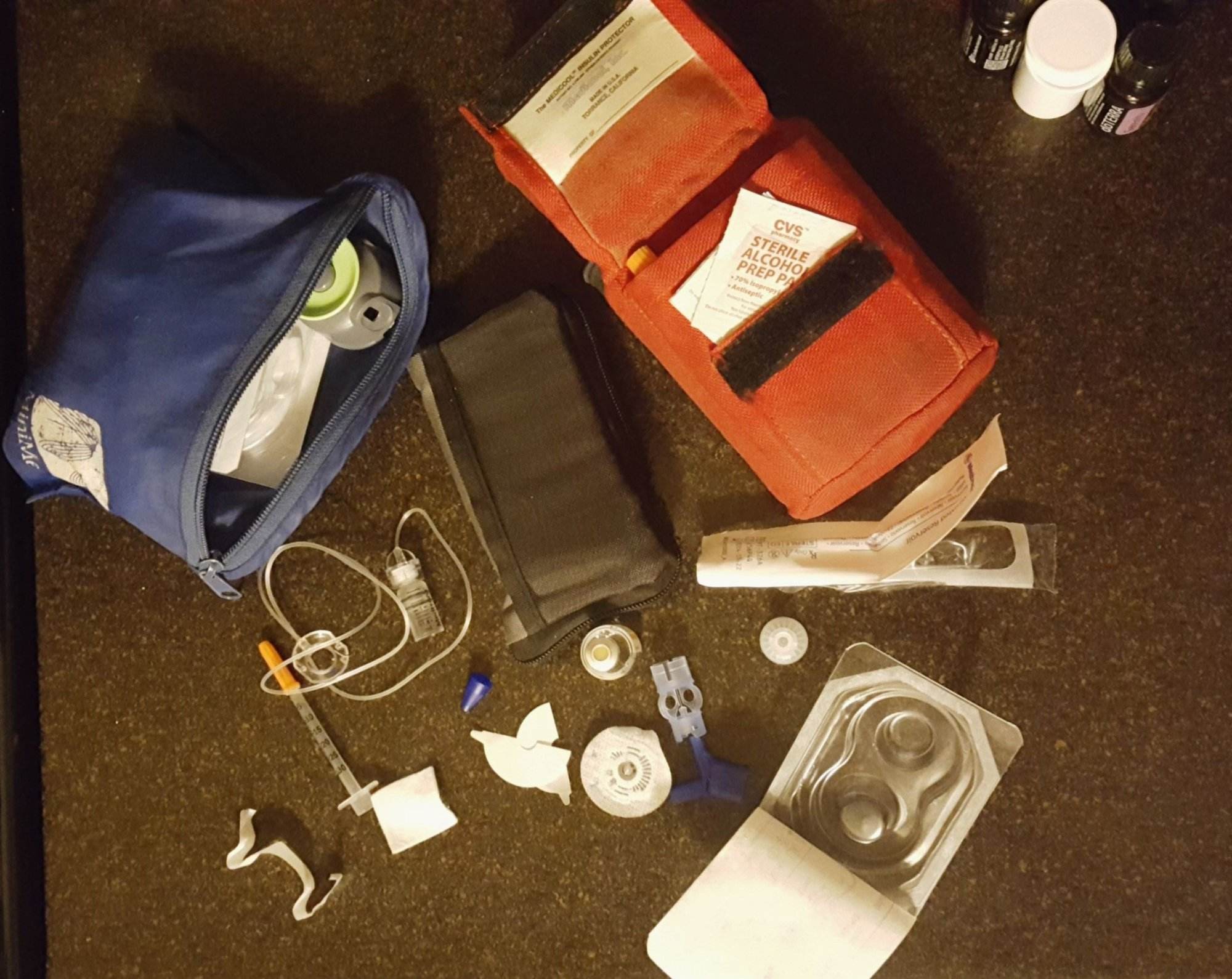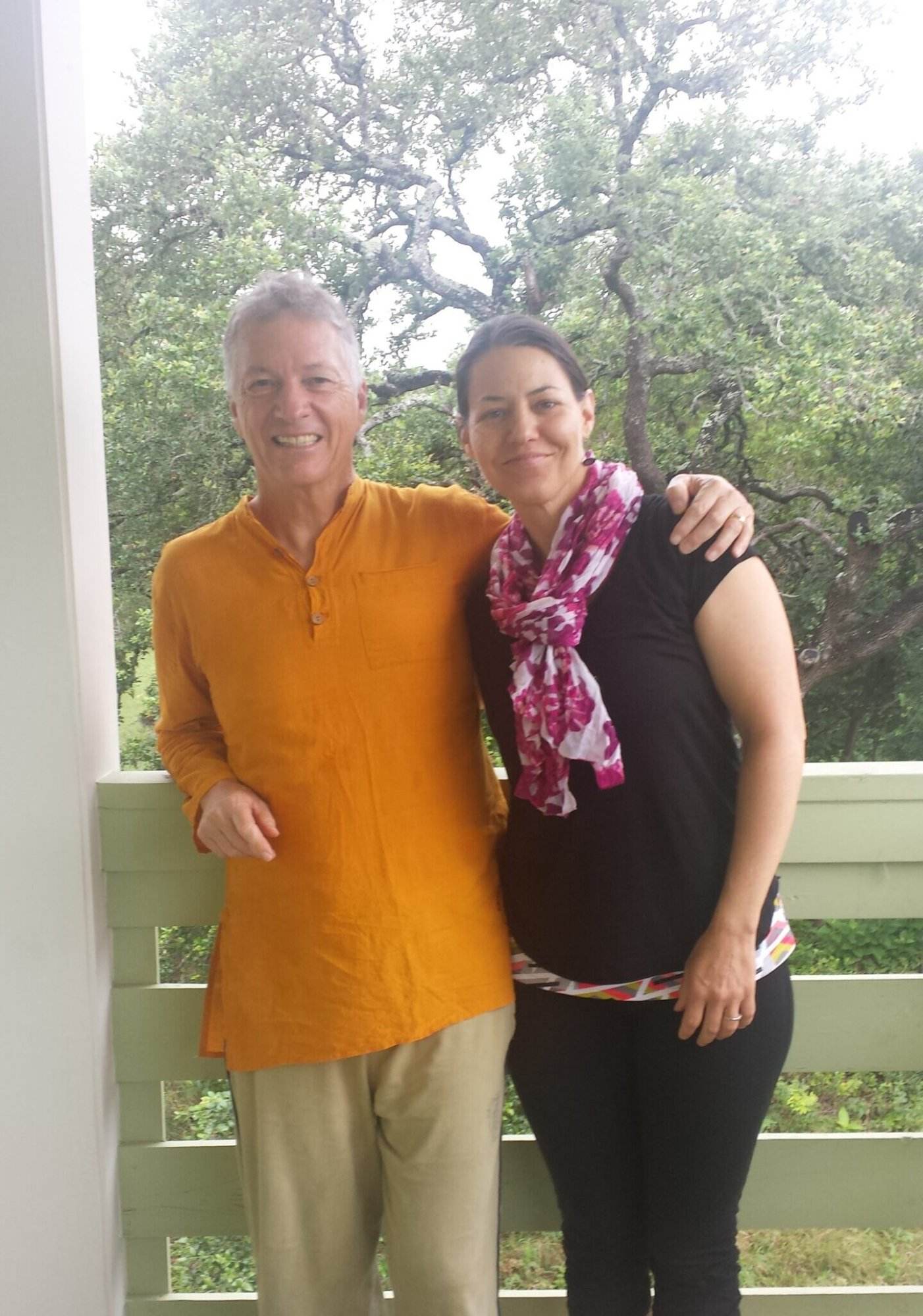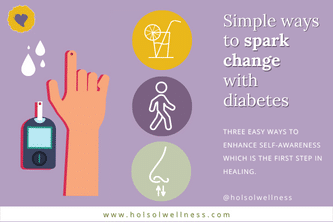Setting the stage
I was in my mid-30s at a yoga ashram outside Austin, Texas for a yoga therapy training.
We were there learning how to support others on their healing journey and here I was in a 911 situation of my own.
On a stormy June afternoon in the downstairs common area at the ashram, I waited for someone to call an ambulance.
I was exhausted, frustrated, irritable, sleep-deprived, hungry, worried, and very anxious.
In a state of prolonged hyperglycemia – high blood glucose (between 200 and 350 mg/dl) for more than 24 hours, I was not responding to insulin delivered through my pump.
For those not familiar with Type 1 diabetes, the target (in general) is around 100 mg/dL.
I took two weeks off work to join the Foundations of Yoga Therapy training so I could continue my yoga scholarship and room with my friend and yoga teacher, Shiva.
And who isn’t intrigued by the twangy appeal of spending time at a yoga ashram outside Austin?
It was day 10 or 11 of an intensive 14-day yoga therapy training for working one-on-one with clients. Our work was deep and powerful, and days were long.
As soon as I realized my blood glucose values were above target, I did my due diligence: I changed my insulin pump infusion site, filled my pump reservoir from a fresh insulin vial, and drank copious amounts of water.
I even manually injected insulin via syringe.

Of course, along with all this, I was monitoring my blood glucose via finger stick every 2-3 hours.
Plus, I booked a massage and went for walks to increase my insulin sensitivity – nothing helped.
I count myself among the privileged when it comes to state-of-the-art medical technology to manage Type 1 diabetes (T1D).
My Medtronic Minimed Paradigm 551 pump with a continuous glucose monitor (CGM) tracked my blood glucose levels every five minutes.
In this case, my pump and CGM were a constant reminder of my hyperglycemic state and amplified the distress that is common with T1D. Read more about diabetes distress here.
Did I mention I am a conscientious, data-loving science researcher by profession who is Pitta dosha dominant?
Diabetes distress personified
I could not eat because I was not responding to insulin; I felt heavy and lethargic. I was frustrated, especially because the food at the ashram was so delicious.
All the tools that were supposed to work were not working. I felt helpless and desperate with my inability to control my blood glucose levels.
After 36 hours of this turmoil and agony, I had had enough. I approached the Director’s office to ask for help.
I thought my only viable option was emergency room care and administered insulin via IV fluids.
Many people living with T1D are known to have “control issues.” Considering our lives can be at stake every single day, this is understandable.
My viligence now seemed to fail me and near real-time updates via CGM were reminding me that I was a “hot mess.”
In hindsight, I was only making my situation worse, but this was my first time feeling completely ‘out of control' with my T1 diabetes.
This was a new experience – at least since I had constant access to knowing my blood glucose via CGM.
The power of presence in yoga therapy
As I waited outside the Director’s office, Lillian Aboim, a yoga therapist, one of the lead trainers, saw me.
As I had hardly slept the night before, I carried my exhaustion and desperation on my face and in my posture.
Lillian placed her hand on my shoulder, asked me how I was doing, and what she could do to help.
I will not forget the solace, strength, and love in her eyes as she awaited my response. I told her I was there to ask to be taken to the hospital to be put on an insulin drip.
Lillian’s compassion and gentle resolve were a powerful, potent, and soothing way to meet my amped-up emotions.
Note: Always be mindful of your embodied state, especially as a yoga therapist.
Tears started to flow down my cheeks as she found the place for me to sit while I was waiting.
Shortly after, Joseph LePage, the program founder, approached with his characteristic grounded presence. He asked me how I was feeling. I said I was exhausted.
“What is it that you need right now? We’ll provide what you need. Do you want to call for help?” he asked.
Sleep-deprived and still anxious, I replied, “I just want to lie down.”
And I remember lying down on this navy-blue couch that could be found in anyone’s grandmother’s house in the downstairs common room of the ashram and Joseph sat in a chair beside me.
Yoga therapy for diabetes
I looked at my insulin pump and my CGM indicated my blood glucose was still above 300 mg/dL. I reclined on the couch with the wall to my right side.
I was aware of the space in the room, I was aware of my teacher in a chair seated on my left, and I felt a single wave of tension release.
Joseph encouraged me to breathe in the way that felt most comfortable and simply observed me. My sense of time was completely distorted; I have no idea how long I spent in each of the states.
He then invited me to explore my breath. With each breath, I could feel waves of tension releasing.
The next thing I recall was an invitation to scan my body. I guided the exploration – there was ample space for me to sense and potentially envision colors as I observed the flow of energy through the body from the soles of the feet to the head and back down.
Then very gently, in an engaging way, he asked me what I felt. During the body scan, I was able to describe what I was experiencing with ease.
The exploration was bringing me back into my body while taking my mind off the anxiety associated with the feelings.
I was tuning in to the more subtle aspects of my energetic body, beneath the emotions.
Joseph then invited me to take a hand gesture called Dvimukham mudra, the gesture of two faces.
I held my palms open and facing upward comfortably at my pelvis with the tips of my little and ring fingers touching the fingers of the opposite hand. (Here's more information about Dvimukham mudra.)
Next in the therapeutic journey, was a guided meditation although I do not remember the details of it. I slipped into a deeply relaxed meditative state.
I could hear people coming and going. I was aware of the presence of other people; I heard the voice of my friend and teacher, Maria Shamas, as she asked if everything was okay. I knew I was not alone.
Time passed. I opened my eyes.
It was an hour later. I looked at my insulin pump. My blood sugar was 170.
What?! My blood glucose went from 300 to 170 mg/dL. I was absolutely stunned.
The Realization
While I felt gratified and surprised, I also felt like I’d been hit by a truck – as is common following swings in blood glucose.
I slowly got up from the couch drenched in sweat and made my way back to my room to shower and collect myself. (Apologies to my IYT fellow classmates who might be reading this for the sweaty couch.)
As I walked back to my building at the ashram, I encountered Joseph.
As he approached, he said, “Well, you look like a different person.” I showed him my pump, to share the time series of blood glucose values, as if I needed another person to witness this.
Precisely 90 minutes earlier, when Joseph sat down with me and I began to relax, my blood glucose values started to decline from ~ 300 mg/dL to 170.
His therapeutic intervention was the inflection point. We were both struck by this realization.
From that moment on, I realized that stress around diabetes is the single most important factor for me – beyond insulin, beyond carb counting, even beyond exercise – to avoid insulin resistance.
This experience taught me that my emotional state is incredibly influential in my body's ability to metabolize insulin.
The yoga therapy intervention, was a turning point in my life with T1D and in my devotion to the study and practice of yoga.
The Reckoning
Approaching the end of our training one or two days later, Joseph asked me if I had a moment to sit with him after our breakfast meal break.
In that ~ fifteen minute converation, I was presented with a choice. Joseph opened by saying that his experience with yoga therapy for diabetes was with clients living with Type 2. He had not seen a case of hyperglycemia with T1D before this experience with me.
He graciously offered a therapeutic plan for me that included 30 minutes of meditation in the morning, an hour of asana, and an additional 30 minutes of meditation (ideally yoga nidra) later in the day or evening.
The look on my face as I was doing the mental gymnastics of time and daily schedules was perplexing. I have no poker face.
He could see that I was struggling with how I would manage a two-hour daily practice. Maybe I even said, “That would be hard.”
The question I was (truly) struggling with: “Was I ready to devote 2 additional hours a day to caring for myself?”
Joseph smiled softly and said, “Well, look at it this way. Your life with (Type 1) diabetes, without meditation and Yoga is like trying to create a graph without any data.”
[Mic drop.]
He clearly knew that I could relate to that analogy and that it would make sense to me.
I cannot live my fullest and richest life without these practices to support me. I can live my life of course but not the most radiant version of it.

If you are devoted to learning and healing and this post resonated, join the my email circle to stay in touch below.


Dear Dawn, thank you for sharing this inspiring story, and for proving tools to improve other people’s lives.
It is a labor of love that uplifts me. Thank you for taking the time to read (and leave this thoughtful commment).